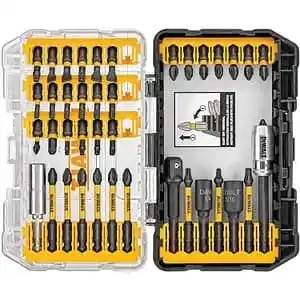Fastening tools are essential instruments used in different industries and DIY projects to consolidate materials safely. These tools are intended to make the most common way of connecting various components, parts, or materials simpler and more proficient. Whether you’re a professional tradesperson or a hobbyist, having a decent understanding of common fastening tools and their uses is critical for effective projects. In this article, we will explore the absolute most commonly used fastening tools and how they are used.
Screwdriver:
A screwdriver is a flexible hand tool used to tighten or loosen screws. It comprises of a handle and a shaft with a tip that matches the screw’s head shape. Screwdrivers come in different sizes and types, including flathead and Phillips, with various sizes of tips for different screw sizes. Common uses for screwdrivers incorporate assembling furniture, securing electrical outlets, and working on appliances.
Hammer:
A hammer is a basic yet essential tool used for driving nails, pins, or different fasteners into materials like wood, metal, or concrete. Hammers normally have a level face for striking and a claw on the opposite end for eliminating nails. There are various kinds of hammers accessible, for example, claw hammers, ball-peen hammers, and framing hammers, each intended for explicit assignments.
Pliers:
Pliers are hand tools with two switches that turn at a fulcrum point. They are used to grip, bend, and cut different materials. A few common kinds of pliers include:
Needle-nose pliers: Used for exact gripping and bending in restricted spaces.
Slip-joint pliers: Including an adjustable turn point to oblige different material sizes.
Cutting pliers: Intended for cutting wires, cables, and other delicate materials.
Wrench:
A wrench is a tool used for tightening or loosening nuts, bolts, and different fasteners. There are a few kinds of wrenches, including:
Adjustable wrench: Highlights a portable jaw to oblige different nut or bolt estimates.
Socket wrench: Uses tradable sockets for different fastener sizes.
Open-end wrench: Has two-level finishes for turning hexagonal nuts and bolts.
Stapler:
Staplers, while honest, are essential tools that serve a basic job in numerous professional and homegrown settings. These conservative gadgets are intended to secure pieces of paper, fabric, or different materials together by driving metal staples through them. Staplers have turned into a basic part of our daily lives, finding a spot in offices, construction sites, upholstery shops, and a large number of different environments.
One of the most common fasting tools uses of a stapler is in the office, where it improves on the most common way of restricting documents, reports, and different paperwork. With simply a quick crush of the handle, a perfectly formed line of staples gets your documents, making them more organized and simpler to handle. In schools, organizations, and administrative settings, staplers are basic tools for keeping everything under control and professionalism.
Nail Gun:
Nail guns address a huge advancement in the world of fastening tools, offering a strong and productive option in contrast to the manual hammer. These fueled tools are intended to drive nails into materials rapidly and definitively, making them vital in construction, carpentry, and woodworking.
Nail guns offer a few benefits over customary hammers. They fundamentally increment efficiency, as they can drive nails rapidly and reliably. They additionally lessen the gamble of thumb wounds frequently connected with hammering nails physically. Furthermore, nail guns give a more uniform and flush finish, adding to the general nature of a project.
In the construction industry, nail guns have revolutionized the speed and proficiency of framing, roofing, and other primary work. In carpentry and woodworking, they have become significant for exact and productive fastening, guaranteeing that furniture, cabinets, and decorative elements are durable and well-constructed.
Screw Gun/Drill:
A screw gun, frequently alluded to just as a drill, is a flexible power tool that serves double capabilities: drilling holes and driving screws into materials. These tools are essential in a large number of uses, from woodworking and metalworking to general DIY projects.
At the point when used as a drill, these power tools highlight a turning bit that bores holes into different materials, including wood, metal, plastic, and stonework. This capability is significant in construction, carpentry, and electrical work, where exact holes are essential for introducing apparatuses, fasteners, and conductors.
The screw-driving ability of these tools, then again, rearranges and speeds up the most common way of securing screws into materials. This is particularly favorable in applications where various screws should be driven quickly and reliably.
Conclusion:
Fastening tools assume a vital part in different industries and DIY projects, making it essential to understand their capabilities and applications. Whether you’re tightening screws, driving nails, or securing materials with rivets, having the right tool for the gig can essentially work on the quality and productivity of your work. By diving more deeply into common fastening tools and their uses, you’ll be better prepared to handle a great many projects with certainty.



